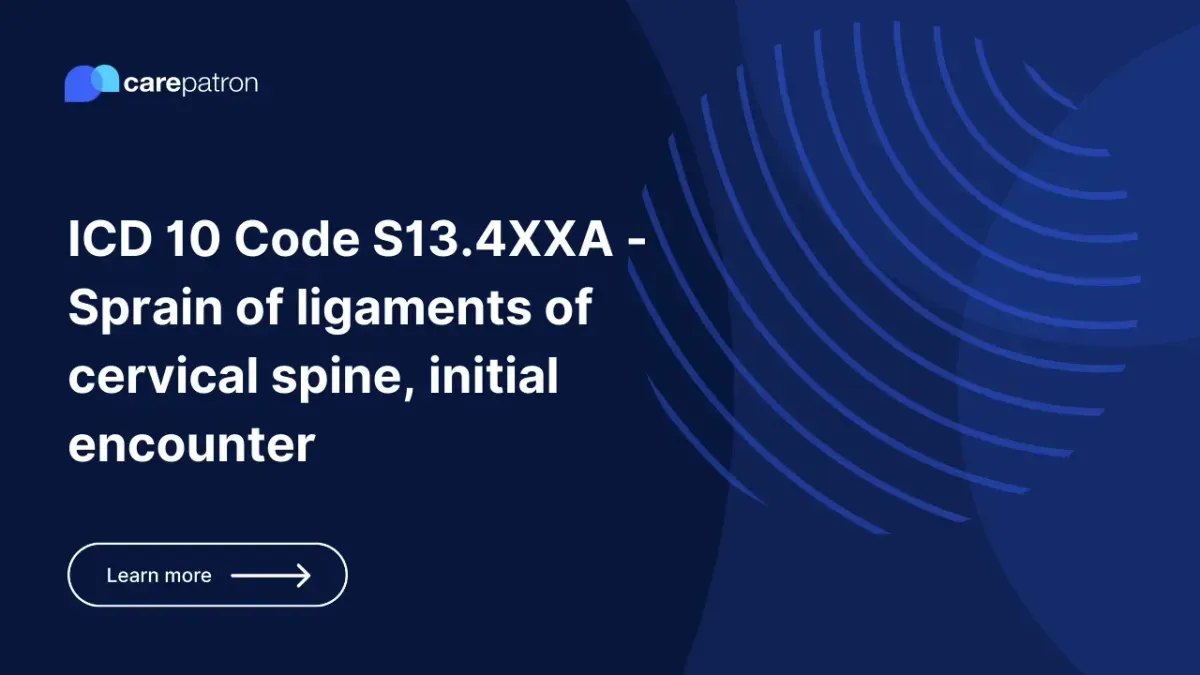
S13.4XXA - Sprain of ligaments of cervical spine, initial encounter
Learn all about the ICD-10-CM code S13.4XXA, including what its clinical description is, if it's billable or not, what its synonyms are, and what other ICD codes are related to it.
Use Code
Commonly asked questions
Yes, this ICD-10 code is billable.
When assessing a patient with cervical sprain for the first time. They also have to be undergoing active treatment for it.
Rest, compression (through bandages, cold/ice compress, etc), medicine, exercise, and physical therapy.
EHR and practice management software
Get started for free
*No credit card required
Free
$0/usd
Unlimited clients
Telehealth
1GB of storage
Client portal text
Automated billing and online payments
